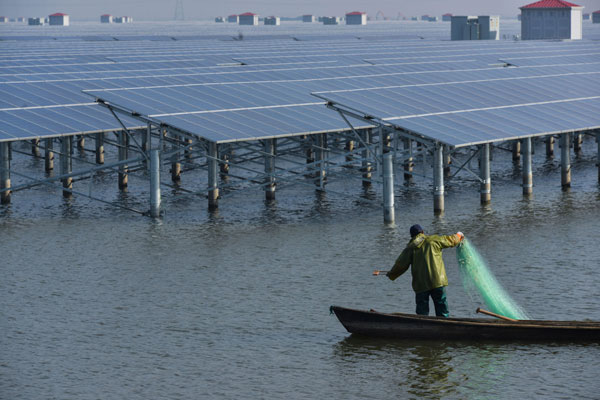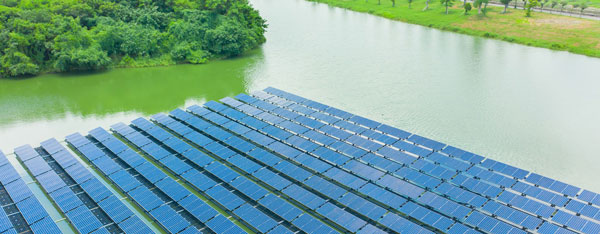Enhancements In Panel Efficiency
Solar panels have experienced improved efficiency over the past years compared to traditional ones, now reaching conversions rates up to 22%. It has mostly been achieved due to the technological advancements of the photovoltaic cells. Among the most critical inventions are perovskite solar cells. When paired with regular silicon panels, they provide and generate enough power to outweigh the lone efficiency of silicon. In terms of large scale, it allows producing more energy per square meter, cutting the land size for the farm.
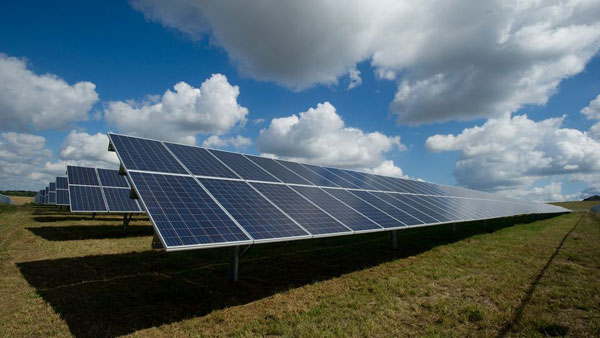
Use of Bifacial Panels
Bifacial panels are equally important. They can acquire sunlight from both sides, referring not only to the front, but also the one facing the ground and other sources of reflection. In the majority of cases, bifacial panels are also paired with smart grid technology. When the panels are wrapped with snow, energy yield increases by 10 to 30%. In dry, high-reflectivity environments, such desert or snow-covered areas, the bifacial panels are beneficial.
Paired with Smart Grid Technology
Smart grid adds efficiency to the energy efficiency of solar power plants. They are responsible for optimizing the spread and the storage of the generated electricity. Using the san storage area of the Californian Tesla gigafactory district, electricity generated by residential solar panel owners may be sold back to the mains at peak drinking times. It allows for the effective use of total electricity and cuts costs for individual in-home solar cells. The use of several types of smart grids makes the process more efficient.
Integration with Solar Tracking Devices
Solar tracking devices exist in two separate variants, using a single or the dual axis to trail the sun. It is responsible for the positioning of the panels in such a matter, that they are always exposed to a maximum amount of sunlight. While single-axis trackers are responsible for 20 to 25% increase in energy yield, dual-axis allows for a 30 to 40% increase. Both of the techniques in improved efficiency in large solar farms at Texas, as well as other southern-states, making solar energy more competitive with other ones in terms of prices.
Use of Transparent Solar Panels
Transparent solar panels are another efficient way to accumulate energy. They are used in glass window panes or coverings above the windows, not limiting the amount of inside light. Currently, they are being used in glass airplanes and schools for the most efficient power acquisition. They are of a big effect in cities, where there is not much space for the traditional panels. At the Michigan State University, school buildings are covered with such glass, allowing for power production and consistent light shade under the most crucial periods of a day. The examples of its use can extend to such buildings as airports, restaurants, and administrative institutions.
Bifacial Panel Technology
Bifaciality Represents a New Step for Solar Panels
The innovation in solar panels production is the bifacial. While traditional monofacial solar panels absorb sunlight only on one surface, bifacial units accumulate energy from both of its sides. Since combining the power of light from two planes of bifacial chargers, a notable increase in energy production can be achieved. Because bifacial panels capture reflected light from the environment such as the ground or building next to them, they can absorb much more solar energy. In the conditions characterized by high albedo environments such as snow, or lighter desert, the gain can be up to 30% compared to its monofacial counterpart. To bring an example from the cited video there, bifacial solar panels in snowy Canada produce distinctly more energy than traditional panels. Thus even with conditions usually considered non-optimal, such as the shortage of direct sunlight in winter, panels benefit from the attractive high surface reflectivity of snow.
This Promising Technology Is Already in Use
One of the world’s largest solar farms is the Villanueva Solar Park in Mexico, which has already equipped all its facilities with bifacial technology. Not only that, the substantial energy gain from the land-saving form of energy production can be celebrated. With the bifacial solar panels, the need for a particular number of panels is reduced, but the overall amount of generated power is increased. As it can be inferred, to utilize all the enthusiasm of energy from both surfaces, in open area photovoltaic solar panels such as in solar farms are required. However, there is an opportunity to use such technology in cities. For example, the Pirelli Building in Milan has standardized its facade with vertical bifacial panels. Thus, this innovative technology offers a place in the common ways to use electric energy and can find applications in the limited areas of various metropolises.
The implication of reflective surfaces
The performance of bifacial panels can be enhanced by putting reflective surfaces strategically under them. In agricultural settings, for instance, white or reflective covering gets used on the ground. Reflective surfaces help in weed control and reflect sunlight on the bifacial solar panels to generate more energy. Consequently, the efficiency of the bifacial panels is improved by a further 10-12% using this method.
Implementation with advanced monitoring
Advanced monitoring and control mechanisms are used in maximizing the efficiency performance of bifacial solar installations. Real-time monitoring helps in effective and precise adjustment of the extended-tilt angles of the panels. Consequently, the panels capture the maximum possible sunlight, especially since the orientation and tilt changes of the sun and cloud conditions are recorded. These monitoring systems have been used presently in Spain to enhance the performance of bifacial solar panels. Because these systems have been integrated into the bifacial solar panels, they have proven a marked increased over than 10% efficiency and reliability, hence, a constant output. This is even if the environmental variation affects the incidence of the sunlight.
The durability and decreased maintenance of bifacial panels
The bifacial solar panels are relatively durable since either side can withstand the environmental factors on the ground. The panels are made with tempered glass surfaces that increase the ability to withstand all forms of mechanical hazard. These bifacial solar panels do not break easily, as is the case of moofacial panels hit by hailstones. Maintenance has also been easy, as either side of the glass is purified by rain and blown by wind. Before they have been invested, this research has also been applied. Some panels are in use in the North Eastern deserts where maintenance has proven difficult.
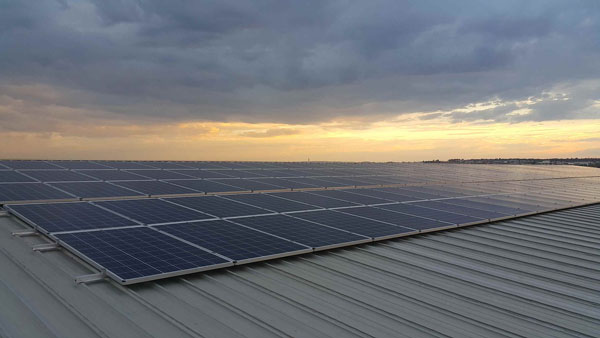
Integration Into Building Materials
Solar technology being integrated into building materials is changing the way we see energy generation in urban environments. Not only does it make the best use of space, but it also makes structures become active energy producers.
Solar roof tiles
Solar tiles let generate electricity and at the same time look like any traditional roofing. For example, Tesla’s Solar Roof is made to fit this description. The roof tiles appear like conventional shingles, however, they have cells to capture sunlight and convert it into an electrical charge. An average household of around 2,500 square feet needs at least 10 kilowatts to produce sufficient energy. Tesla’s solar tiles routinely produce energy that can satisfy needs in the average household. Moreover, in locations such as California where the amount of generated solar energy is known to be very high, users who installed Tesla Solar roofs in their homes reported a significant reduction in their electricity bills, and, besides that, it also looks neater and better than regular tile roofing.
Solar windows
Solar windows take an approach to substitute regular glass surfaces with ones that can produce power. An example of such technology are transparent solar windows that were created by the company Ubiquitous Energy. These solar cell windows look similar to attached pull-out windows, and no one can tell by sight that they are capable of generating electricity. Therefore, these windows appear almost identical to ordinary ones, except they can harness sunlight to turn it into electricity. An office building has recently been raised in the middle of New York and has these installed windows. As a result, this building is now able to produce a large amount of its energy on-site, meaning it no longer needs to pay for electricity from the grid, which leads to a lower electricity bill.
-
Energy-generating facades: Energy-generating facades involve the use of photovoltaic panels as part of the building’s outer wall or cladding. The SolarLeaf project in Hamburg presents a viable use of that technology, using an algae bioreactor facade that generates electricity and biomass. This process consumes both light and CO2, thereby offsetting the building’s carbon footprint, and the produced biomass has potential value as a source of energy.
-
Solar paint: In a few years, it might be possible to turn any surface into solar panels by applying solar paint to it. Researchers at the RMIT University have recently developed a compound, which splits water by using sunlight and humidity, producing hydrogen gas. While it currently remains in the experimental phase, it is possible that that technology would later be applied to the design of various construction materials.
-
Solar Pavements and Roads: Another way to integrate photoactive solar panels would be through roads and pavements. The Solar Roadways Project in Idaho develops individual solar panels, which can be used as modular pavement covers. Their installation provides electricity through the solar cells, LED lighting, and the heating of the cover, which would melt snow and dirt. In a small pilot installation, a parking lot, equipped with solar pavement panels, produced enough electricity to power restrooms and light nearby office buildings.
-
Practical Steps for Solar Energy Implementation:
-
Evaluation and assessment: Take a look at the building or construction design, assessing the area and direction, along with electricity needs, in order to figure out which type of the solar installation would provide the most utility.
-
Material selection: Select the type of material to be used, based on the type of building and its location. It could be solar roof tiles, windows, or facade covers, or a BIPV panel.
-
Installation: Specialized contractors work diligently to follow plans and install solar materials. Integration with other building systems is monitored to identify potential problems.
Monitoring and Maintenance: An appropriate monitoring system is integrated to keep track of when energy is produced and how much. In addition, regular maintenance should be conducted to address any potential issues that arise.
Advances In Energy Storage
In the solar energy industry, energy storage is critical for balancing supply and demand. Recent energy storage technology breakthroughs are radically shifting the solar energy industry. Energy storage ensures a robust and reliable energy supply, and here are some of the latest relevant breakthroughs. Solar energy panels collect and store solar energy harvested during the day. The Powerwall 2 from Tesla captures solar energy during the day to power your home in the night or when the grid is down. The lithium-ion battery has a capacity of 13.5 kWh and power of 5 kW and a depth of discharge of 100%. The battery can serve residential purposes with the most reliable energy storage solutions in the world. Australian homeowners report a near-total hybrid rooftop solar Panel and home battery system energy independence since installing second Powerwall 2. It is a versatile at-home solution that can counter the uncertainty of electricity. It can maintain smooth operation and durability during weather disturbances and when the grid is down.
Solid-state batteries are emerging rapidly as a promising technology. They demonstrate higher energy density and improved safety compared to lithium-ion batteries. A solid-state battery is an electrolyte that is not liquid, but rather solid. Battery technology from QuantumScape is the best way to achieve it. The battery can live longer by conducting charging and discharging cycles more quickly. In genuine electric-vehicle applications, the range will be doubled to 80 miles and the charging time will be cut in half to 15 minutes. Flow batteries are inherently scalable, making them the preferred option for a variety of high-capacity storage applications. The Dalian Flow Battery Energy Storage Peak-Shaving Power Station in China is one such major example. It has a capacity of 200 MW/800 MWh, and vanadium redox flow batteries are used to store and dispatch electrons at a far faster rate.
Compressed Air Energy Storage (CAES)
Compressed Air Energy Storage systems compress air to store it as a potential energy source and release the air to generate electricity. The McIntosh Plant has been utilizing CAES technology since 1991 in Alabama. It can store up to 2,700 MWh of energy which can back up as a reliable source of power. Recent advancement in CAES technology including isothermal compression and expansion improves the efficiency of the system. Hydrogen Storage
Hydrogen storage is a novel technology to store solar excess energy as a form of hydrogen gas. H2Future is an energy storage project located in Austria, which is an illustrative example. It is produced through the electrolysis of water from surplus energy from renewable sources. The generated hydrogen is stored and used in industry, power production, and transports. Hydrogen as an energy storage system is a universal solution that satisfies the decarbonization policies and ensures long-term storage and expandable capability. Thermal Energy Storage
Thermal energy storage systems involve storing solar energy as heat, and the heat is converted into electricity. For instance, the Nevada Crescent Dune Solar Energy Project uses molten salt as thermal storage. It can store up to 1,100 MWh of solar energy as heat in the molten salt medium and convert it into electricity even in cases when the sun is not shining.
Practical steps of implementation
Firstly, it is required to assess the needs of energy storage with reference to the scale of solar power production and its predicted usage so as to decide on an appropriate storage system. Secondly, after the needs of the energy storage system are defined and constraints are elaborated, the choice of technology should be made between lithium-ion or flow-suspension batteries and solid-state batteries.
Installation: form a partnership with experienced contractors to ensure that the storage system is adequately integrated with the solar energy system.
Monitoring and optimization: advanced monitoring systems should be implemented in order to track how well the system is running and apply the stored energy in the most efficient and reliable way.
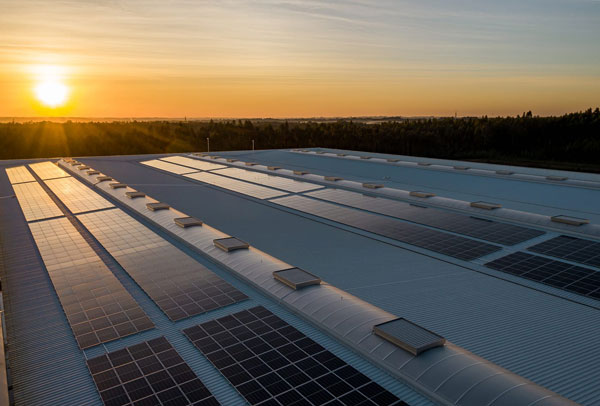
Smart System Integration
Smart systems combined with solar energy technologies allow for increased efficiency, reliability, and improved user experience. They are defined as a combination of software and hardware components. A software part is responsible for monitoring and managing processes inside the technology, while a hardware part is the technology itself. The paper will review three examples of smart systems and solar energy technologies that work together:
Real-Time Energy Monitoring
The example is the Enphase Enlighten system that provides detailed energy data to homeowners; it provides users with detailed information on their solar panels’ performance. For instance, in the case study from Texas, homeowners on Enphase Enlighten systems were able to track their energy usage and production in real-time. In the end, they were able to go through the data and discover some underlying issues about their electricity usage, which allowed them to finally increase their system’s overall performance by 20%. This system clots in the software that will track the solar panels’ operation to show if the amount of energy they produce makes any sense.
AI-Driven Predictive Maintenance
The example is a case of SparkCognition’s Artificial Intelligence solution used on a solar farm to decrease the amount of downtime between failures. Machine learning is used to analyze some data provided to the software and predict when a system should be serviced or fails. For instance, in the case of a farmer in Arizona, the amount of time between a system’s prediction of failing and the actually failing of the system was 30 days; and the amount of time the farmer knew something was not right after starting to use the AI performance decreased to zero.
Automated Energy Management
One of the earliest products that began selling different solar energy systems together was Tesla. For example, their latest model is Tesla Powerwall and Tesla Gateway. It makes decisions based on the electricity price and house need, will that be hoarding energy, dropping it, or selling it to the electricity net. The usage of smart systems on the solar energy technologies is promising the reduction of houses that need energy to 40% in one Hawaiian case. At which point the price itself goes down, energy will be much harder to get from the city grid.
Smart Inverters
Solar power systems can be efficiently and reliably managed using smart inverters. For instance, the Sunny Boy product series by SMA is the best inverter for a solar power system as it has grid management capabilities. Installations in Germany have been more efficient and the grid was stable even when the solar output was fluctuating. It is better in transferring energy between the solar system and the grid and the rates of energy loss are normalized due to better integration with the power grid.
Integration with Home Automation Systems
It optimizes the functionality of a solar system and is more convenient due to more energy-saving mechanisms. Smart solar systems may include automation to enable solar owners to control it using their voice through products such as Amazon’s Alexa and Google Home. A family in California was able to reduce its energy costs to up to 15% by optimizing its energy usage pattern through controlling its smart solar system. It uses intelligent devices risking connecting it to the solar system and energy storing.
Vehicle-to-Grid (V2G) Technology
Electric vehicles can interact directly with the power grid to manage energy safely and smartly. For example, Nissan’s LEAF model has V2G features that enable it to use a charger to store its excess solar energy and feed it back to the grid when it required it. Through a pilot project in the United Kingdom, V2G was able to increase the stability of the residence and people were given more income for selling energy to people in homes. They use practical factors to help solar system owners use those efficient factors.
Practical Steps for Implementation
-
Assessment and Planning: Identify solar energy systems’ needs and the best smart technologies to address the identified needs.
-
System Integration: Work with other experts to align the smart system with the power system already in place for compatibility.
-
Monitoring and Optimization: Using high-tech applications to assess the performance of the integrated system allows energy maintenance.
Training and resources: providing training to the users aims at making them interact appropriately with the smart solar technologies in order to benefit from them.
Perovskite Cell Efficiency
Perovskite solar cells are in the spotlight due to remarkable efficiency improvements. This type of cells constructed from a unique crystal structure has surged in efficiency from 3.8% in 2009 to over 25% today. The first salient feature of the cells that outperformed its predecessors is the efficiency that competes with conventional silicon cells. Oxfore PV is among such companies and possesses that unique technology to manufacture tandem cells which are based on perovskite and silicon. These tandem cells have been measured at 29.4% in efficiency, whereas other common silicon panels have an average efficiency of 22%. These results imply that more electricity is obtained from the same amount of sunlight, thereby boosting energy production at solar farms more efficiently.
Another advantage of perovskite cells over the silicon ones is the simplicity of production that does not require much energy. For instance, perovskite cells can be produced using a low-temperature solution process which significantly reduces the production costs and energy consumption. A pilot project conducted in Poland found that solar power generated from perovskite cells is a quarter of the price of solar power generated with silicon cells. These results suggest that solar energy will become much more affordable with lower production costs for perovskite cells. Another advantage of such cells is their other physical features such as light weight and flexibility. Solliance consortium came up with the technology of making flexible perovskite solar panels instead of those heavy glass ones commonly used on mundane applications. In the Netherlands, flexible perovskite solar panels have been tested on public transportation shelters, where they provided an aesthetically pleasing and eco-friendly source of energy.
Advances in Stability and Durability
One of the main disadvantages of perovskite solar cells at the onset of research was their limited life-stability; however, significant improvements have been made in this area. For example, researchers from the University of Cambridge developed a sense for increasing stability to high levels: the resulting hybrid organic-inorganic material could sustain high moisture and heat levels. Namely, long-term field testing of such improved cells has shown that they maintained high electricity generation performance at high levels of efficiency. That is, perovskite cells are already showing their ability to be used in the long term.
Application in the Real World
Perovskite cells are currently being tested in a variety of ways, showing their immense versatility and future use. For instance, one of the areas that show the potential benefits of this technology is collaboration. Thus, the company Oxford PV is cooperating with NREL to launch pilot projects of companies introducing perovskite-silicon tandem cells. The first such installation was made in the San Francisco Bay Area by Google, and, according to preliminary results, a significant increase in energy production can be stated. In other words, this technology has high potential and can be widely adopted in the near future for home or even business solar energy applications.
Environmental Impact
Finally, the environmental impact of the use of perovskite cells is far less significant than well-established solar cells. First, the materials used for production are quite abundant, and none of them pose a certain danger to the environment. In fact, a lifecycle analysis of perovskite colors indicated that it could even reduce the carbon footprint of around 20% grids; made by MIT researchers,. Suggested future work includes the following sections:
-
Research and Development: Solving the remaining problems in the field of manufacturing efficiency, scalability, and efficacy of solar cells.
-
Pilot Projects: Test and refine technology under a variety of applications.
-
Manufacturing: Scaling up and improving manufacturing processes to produce cells in large quantities at the cheapest prices.
Market Adoption: Establishing the advantages of perovskite cells for potential adopters, such as high efficiency, low costs, and environmental benefits.
Regulatory Support: Collaborating with regulatory bodies in the development of standards and certifications for safety and functionality.
AI In Energy Management
Artificial intelligence is reshaping energy management in the solar industry, making it more efficient, reliable, and cost-effective. Through the use of AI, solar energy systems can optimize performance, predict maintenance, and balance supply and demand. Below, we summarize how AI is used to support these solar energy management processes.
-
Predictive maintenance employs artificial intelligence and machine learning algorithms to analyze data from solar panels and recognize patterns that predict that some element is going to fail. SparkCognition AI solutions have been used to monitor the condition of equipment and predict failures at solar farms. For example, in a large solar farm in California, predictive maintenance decreased the downtime by 25% and cut the maintenance costs by 30%.
-
Energy forecasting is indispensable for managing the balance between supply and demand. IBM Watson uses AI algorithms to forecast solar energy production based on weather forecasts, recorded energy production, and consumption patterns from the past. For example, in the project with the solar farm in Germany, Watson’s forecasts increased the energy utilization efficiency by 15%.
-
Dynamical energy supply with the use of AI to integrate the solar energy supply into the smart grid and effectively balance it with the demand for energy. For instance, Google DeepMind has partnered with the UK National Grid to optimize the use of solar power in the grid. During the testing period, the AI algorithms improved its efficiency by about 10%.
The emerging technology of AI is already widely used to advance the processes of solar energy management.
Autonomous Energy Trading
AI allows for autonomous energy trading, where solar energy producers can sell their excess energy in real time. LO3 Energy developed a platform that utilizes blockchain and AI for peer-to-peer energy trading. In a pilot project in Brooklyn, New York, people with solar panels sold their excess energy to their neighbors through an AI-based marketplace. The technology helped maximize the use of the solar energy produced locally. Also, it provided economic benefits to those who participated in energy trading.
Load Management
AI helps manage loads in a solar energy system, ensuring the capacity of each location is distributed optimally. AutoGrid’s Flex platform utilizes AI to manage loads in real time. In a solar installation in Texas, the platform managed 19 sites. Subsequently, peak loads were reduced by 20% and, more importantly, there were no overloads. The technology continually balances loads.
Battery Storage Optimization
AI assists in optimizing battery storage systems so that the solar energy stored in a battery is used efficiently. Tesla’s Autobidder platform uses AI to manage battery storage in real time. The platform was used in the installation in Australia where an 18%-increase in the efficiency of the 100-MWh battery storage system was observed. Since the batteries were charged and discharged at optimal times, the solar farm maximized the return on investment.
Practical Steps for Implementation
-
Data Collection: Collect comprehensive data from solar panels, weather forecasts, and the patterns of energy consumption.
-
AI Integration: Implement AI for analyzing data in order to optimize the management of solar energy-related processes.
-
System Monitoring: Continually monitor AI systems to guarantee they work correctly and make accurate predictions.
Knowing how to excite users about photovoltaic energy-a robust user training is required. Ease of understand to fairness of results and the AI precision- Fast and accurate user training is essential to activate the system. This ensures that emergency control actions are initiated on time. Together with good communication, AI also ensures the scaling of AI solutions.


